June 24, 2016
Air Date: June 24, 2016
FULL SHOW
SEGMENTS

US Helps India Finance Solar
View the page for this story
Indian Prime Minister Narendra Modi and US President Barack Obama have announced a public and private financing package to leverage $1 billion in financing for solar power development in India. Renewable energy expert Carl Pope tells host Steve Curwood that financing is a major hurdle to growing carbon-free energy in the developing world, and that rich countries like the US need to help out if they want to slow the advance of climate change. (15:30)
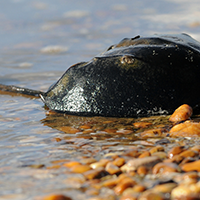
Counting Horseshoe Crabs to Save Them
/ Karen ZusiView the page for this story
Horseshoe crabs are important in the Atlantic ecosystem, and also in medicine. They are an ancient species but lately in decline. Reporter Karen Zusi profiles a Massachusetts Audubon Society tagging program that will provide an accurate census and reliable information to understand how many can be safely harvested. (05:30)
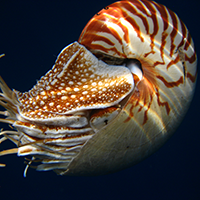
The Nautilus at Risk
View the page for this story
The chambered nautilus, with its spiral shell and up to ninety tentacles, is a bizarre and beautiful cephalopod. It has remained largely unchanged through five hundred million years and five major extinction events, but now global demand for nautilus shells is driving it to the brink. Sarah Uhlemann of the Center for Biological Diversity explains to host Steve Curwood that her organization is petitioning the National Marine Fisheries Service to list the chambered nautilus under the Endangered Species Act. (08:20)
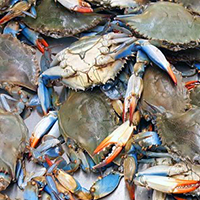
Beyond the Headlines
/ Peter DykstraView the page for this story
Fluctuating blue crab populations take center stage in this week’s trip beyond the headlines. Host Steve Curwood and Peter Dykstra also discuss efforts by the US Chamber of Commerce that seem intended to thwart the solar industry and the importance of famed environmentalist Rachel Carson’s early book, “The Sea Around Us”, on the 65th anniversary of its publication. (04:55)
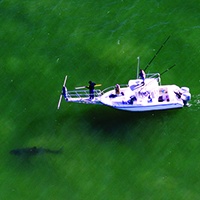
The Great White Shark Scientist
View the page for this story
Scientists are tagging and videotaping Great White Sharks in the waters off Cape Cod, Massachusetts to assess this local population. For her latest book, The Great White Shark Scientist, author-adventurer Sy Montgomery followed scientist Greg Skomal in action. She tells host Steve Curwood about the charismatic sharks they found and why your toaster could be more dangerous to you than a Great White Shark. (11:05)
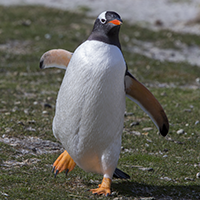
Up Close with Penguins, Our Fellow Pedestrians
/ Mark Seth LenderView the page for this story
On the Falklands and South Georgia islands, curious Gentoo and King Penguins waddle up to Living on Earth’s Explorer in Residence Mark Seth Lender to take a closer look. (02:40)
Show Credits and Funders
Show Transcript
HOST: Steve Curwood
GUESTS: Carl Pope, Sarah Uhlemann, Sy Montgomery
REPORTERS: Karen Zusi, Peter Dykstra, Mark Seth Lender
[THEME]
CURWOOD: From Public Radio International, this is Living on Earth.
[THEME]
CURWOOD: I'm Steve Curwood. In the spirit of the Paris Climate Agreement, the Obama Administration and a group of private foundations come together to put serious money on the table to help India go solar.
POPE: The two facilities that were announced are probably going to leverage a billion dollars of private investment. A billion dollars will probably give about 100 million people electricity. It's really not that expensive to give people electricity, it's just that you need the financing you need the money upfront.
CURWOOD: Sun power for India. Also, heading to the seashore to count horseshoe crabs. Their numbers are in decline, but their value is high.
GOLDKAMP: They’re needed for medical uses, but then you also have harvesting for bait and both are necessary. So part of it is, how do we get all this to work together, and keep the supply of horseshoe crabs at the maximum that you can.
CURWOOD: That and more this week, on Living on Earth. Stick around.
[NEWSBREAK MUSIC: Boards Of Canada “Zoetrope” from “In A Beautiful Place Out In The Country” (Warp Records 2000)]
[THEME]
US Helps India Finance Solar

A woman maintains a solar panel in the village of Tinginaput, India, which is not connected to the main electricity grid (Photo: UK Department for International Development, CC BY-NC-ND 2.0)
CURWOOD: From the Jennifer and Ted Stanley studios at the University of Massachusetts Boston and PRI, this is Living on Earth. I’m Steve Curwood.
The Obama White House and a group of US foundations are joining forces to help India boost its efforts to go solar. The deal was announced recently when Indian Prime Minister Narendra Modi came to Washington and marks a milestone of cooperation between the world’s second and fourth biggest emitters of climate changing gases. Joining us to discuss the deal and Mr. Modi’s visit is Carl Pope, former executive director of the Sierra Club and now an advisor at Inside Straight Strategies. Welcome back to Living on Earth, Carl.
POPE: It’s wonderful to be with you again, Steve.
CURWOOD: So what exactly did President Obama and Prime Minister Modi agreed to here?
POPE: Well, they agreed to a couple of very important things, but what was most striking was that their joint clean energy agenda rose to the very top of the US-India relationship. The US-India relationship is under a bit of strain. There are a variety of topics on which the two countries don't agree, and one of the places they found that they can most easily and productively agree is on the transition from a carbon-based economy to a low-carbon economy, from dirty to clean, from outmoded to modern. And in that context, India asked the United States to prioritize its support for India's clean energy on India's greatest energy scandal and tragedy, which is that there are roughly two to four hundred million Indians who don't have access to electricity. These are mostly the poorest and most remotely located people in the country. They are in some cases, have a wire that runs to their village, so technically the village is electrified. It may have one light in the town square, but none of the houses have electricity, none of the families have lights, none of the families can charge cell phones, and this can be fixed and it can be fixed affordably.
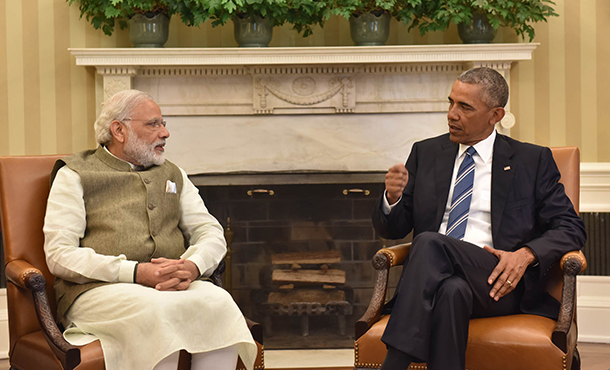
Indian Prime Minister Narendra Modi meeting with President Obama at the White House (Photo: US Embassy New Delhi)
CURWOOD: Let's was talk about some of things that they put on the table to electrify India. I mean, India has a lot a coal, so what did they talk about in terms of clean energy?
POPE: Well, they agreed to create two new financing facilities because the barrier to clean energy is not that it's expensive. It's actually cheaper over its lifetime than coal or anything else, but to get it done you have to finance it. You have to have the upfront money because when you put up a solar panel, you're buying 20 years of electricity at once, because after that it's free. Finance is a problem in India. It's a high interest rate economy. It's got limited capital markets. Finance is not a problem in United States. We have an abundance of capital sitting on the sidelines and low interest rates. So what Modi and Obama agreed to was to set up two financing facilities, not to pay for all this electricity but simply to take the risk out of the equation, so that a US Bank or US pension fund can loan for Indian solar for an off-grid village and they won't have to worry about the future price of the rupee. They won't have to worry about some situation, which India defaults on its loans. Those would be guaranteed by the US government and the projects would be prepared and vetted by US philanthropy funded NGOs. So it's a partnership for the first time between American NGO finances, the Indian government and the government of the US.
CURWOOD: Now, what about the interest rate problem, Carl, because you know companies borrowing here, they can get money four, five, six, percent, over there, you know, 12, 13, 14, 15 percent.
POPE: Well, the idea is they would loan into India, pay for Indian solar and get nine percent. The Indians are happy because it's a lot cheaper than 14, the American banks are happy because it's a lot better than four.
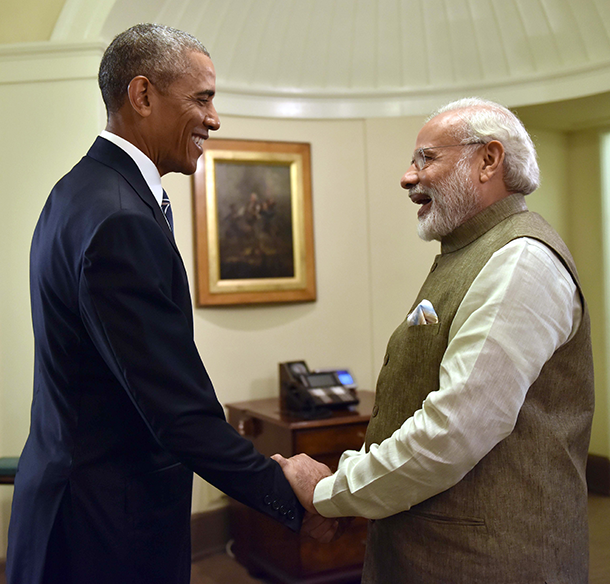
Prime Minister Modi and President Obama (Photo: US Embassy New Delhi)
CURWOOD: How much investment are we going to see here, and how big is it in terms of the need, do you think?
POPE: The two facilities that were announced last week are probably going to leverage a billion dollars of private investment even though there's only $60 million of government money and foundation money involved.
CURWOOD: And how far does $1 billion go in terms of solarizing India?
POPE: A billion dollars, because you turn it into a revolving fund, a billion dollars will probably give a hundred million people electricity. It's really not that expensive to give people electricity, it's just that you need to finance it. You need the money up front.
CURWOOD: That's amazing that a hundred million people will be able to get electricity with this deal.
POPE: It's a huge deal, and once we do that, frankly, the market will then have developed, the supply chains will be built out, and we think the rest of the job will get done. Because I think we actually can say with these facilities that India is well on the path to universal electrification, something it's been seeking for 40 years.
CURWOOD: Now, what about the United States and the WTO? I mean right now US has a decision from the WTO that essentially blocks India from supporting local solar power generation with a subsidy. And India said look we would have this subsidize solar for things like the national rail system.
POPE: I think that is one of the stupidest things the US government has ever done. Most people in the US government think it was one of the stupidest things the US government as ever done.
CURWOOD: So, why is it still there?
POPE: Because the US trade representative's office wants to demonstrate to some US companies that they're tough guys.
CURWOOD: So, wait a second. We have the President of the United States, the Prime Minister of India coming together, a little singing kumbaya to do solar and yet the US trade organization, the trade ministry, if you want to use that word, has got India on the ropes in terms of subsidizing local solar. The president has no power here I gather.
POPE: I mean, the US trade office often does this. They go off and they say the most important thing in the world is the fine print in the WTO, the most important thing the world is not the policy the President of United States. That's not uncommon and this is one place where I think Barack Obama needs to use his pen to give instructions to his trade rep.
CURWOOD: A little more on India. I understand that there's also an agreement dealing with HFCs, the refrigerant chemicals.
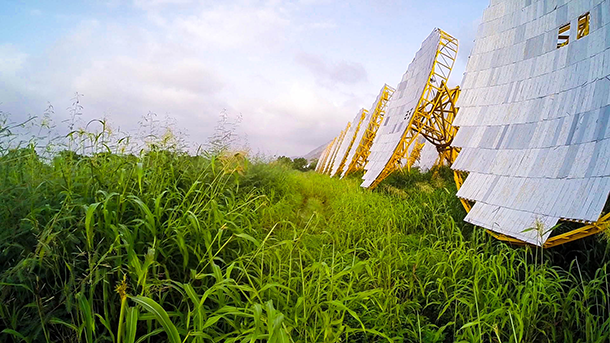
A solar thermal array in India (Photo: Brahma Kumaris, Flickr CC BY-NC 2.0)
POPE: For global climate that's probably the big deal. That by itself is worth a half degree in terms of the amount of warming we will experience over the course of this century, and because the HFC's last so long that's actually a half degree 200 years from now. It's a really big deal and getting India on board was the last step and the deal on solar, the US showing the government of India that we were willing to respond to India's needs was a key ingredient in getting India to say,“OK, we'll get behind a rapid phase out of HFCs.”India had wanted a slower phase out again because they have some domestic companies that like the US solar companies pushing the trade office Modi had some domestic HFC companies pushing him and it was really terrific that they got over that hurdle.
CURWOOD: So, perhaps you could give us a little status update on renewables more generally. I mean over the years a lot of has been made about the expense of green energy compared to fossil fuels. It seems that the formula is flipping or do I have wrong?
POPE: The formula has flipped. The answer for electricity is that in most markets in most of the world you could now deploy wind and solar more cheaply than any other form of new generation, and fairly shortly it's going to be true in many of those countries that new solar and wind will be cheaper than already constructed coal and nuclear.
CURWOOD: In your view, what is driving the declining cost of renewables?
POPE: Deployment. Deployment. Deployment. It's called economies of scale. It's not a new idea. Adam Smith pointed it out back in 1776 when he published Wealth of Nations. The more you put in new technology out in the marketplace the cheaper it gets. And this turns out to be particularly true with technologies that have a lot of information embedded in them, like computers and solar panels and wind turbines, and the price of solar panels has just been plummeting, and I saw an article yesterday saying it's probably going to plummet another 50 percent.
Let me put that in context. Last month in Dubai, a solar project, unsubsidized, was contracted at three cents a kilowatt-hour. If that price drops 50 percent in the next five years that means that by 2020 solar will cost one and a half cents a kilowatt-hour. That is the cheapest electricity in world history. Not just the cheapest electricity today. The cheapest electricity anybody has ever had.
CURWOOD: A lot of people are going to love it. I think a number of folks that have a different attitude are going to be upset that you can't put a meter on the sun, can you?

Over the long term, solar is a relatively low-cost form of energy, but installations carry a significant up-front cost and require financing. (Photo: Brahma Kumaris, Flickr CC BY-NC 2.0)
POPE: You can't put a meter on the sun. That is true.
I want to say one thing about the Indian situation. One of the striking things is that the government of India recognizes the danger that they are going to have power plants that are stranded assets and just last week, just after the Modi-Obama meeting, the government of India canceled four of their largest coal-fired power projects. They just canceled them they said, “we don't need them,”and they said, in fact, “we don't need a new coal-fired power plant for the next three years. We can have a pause on building coal until we see what we really need.”And my guess is that pause may effectively be close to permanent. They will only build coal plants going forward to replace with new modern plants old ones they need to shut down. I think we may have seen peak generation from coal-fired power in India.
CURWOOD: So, Carl, to get to a 100 percent renewable future, what do we need in terms of totally new technologies, or do you feel we're really good to go with just more efficiencies with solar, wind, tidal, so and so forth.
POPE: I don't think on the electricity front we need anything totally new. We need to do something in United States that other countries in Latin America and China are doing, which is to build long-distance direct-current transmission, so that when the wind is blowing in North Dakota, and it's nighttime in Los Angeles, LA can get its power from the wind. And in Chicago, when the peak load hits at about five to about seven p.m. central time, that's not a very good time for solar power in Illinois, but that is a terrific time for solar power on the west coast and we can shuttle those electrons and the cost, it turns out, is very, very minor. You could cut our electric bills nationally by about 10 percent, by building a national grid. The problem is we have a lot of regulatory barriers, a lot of states that don't want to let people use their territory to ship electrons across them and we're going to have to fix that problem.
CURWOOD: Carl, before you go, tell me why so many wealthy countries are seemingly reluctant to invest in renewable power for the developing world? It is one planet; it is one atmosphere; it is one catastrophe of climate disruption we face if we don't work together.
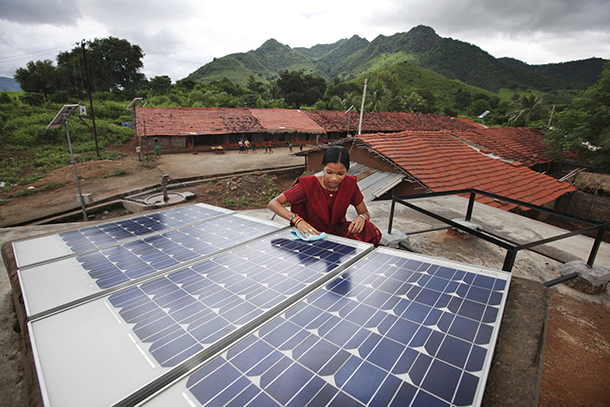
Rural solar panel maintenance does not add significantly to the total cost of solar energy (Photo: UK Department for International Development, CC BY-NC-ND 2.0)
POPE: We in the industrial world have been telling ourselves a lie for the last five years. The lie is that we're overleveraged; the lie is that we have overinvested. We don't just tell us this lie about whether we can afford to invest in clean energy in Africa. We tell us this lie, that way we can afford to repair bridges in Milwaukee, and the Europeans tell themselves this lie about whether they can afford to modernize their grid in Europe. So austerity, the idea that the problem the rich world faces is we have invested too much, has got our hands tied behind our back, and so we're not doing a whole bunch of sensible things, and then we look around we say,“well, we're not investing. Gee, we're puzzled by why there isn't much job growth. Gee, we're puzzled why the global economy isn't growing. Gee, we're puzzled by why wages aren't rising.”Well, they're not rising for a very simple reason which John Maynard Keynes in the Great Depression: if you don't invest enough, you don't have a dynamic economy, and we need to let go of the bugaboo and austerity and recognize that right now with interest rates in Japan, Europe and United States at record low levels, it's the perfect time to invest in long-range projects like clean energy, like electric cars, like a modern grid and, yes, like bridges in Milwaukee that won't fall into a river.
CURWOOD: Why do you think the rich part of the world has a poverty mentality?
POPE: Because we have a political movement in the global north, which believes that government is a problem and collective resources are a curse, and that everything should be privatized. So they have told us over and over and over again that we're poor and that we need to cut back and that the big problem is the national deficit. Well, the national deficit is a big problem if we acumulate it by wasting it on things like wars. The national debt is not a big problem if we just invested in things that make the economy grow faster.
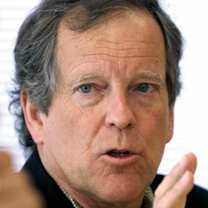
Carl Pope is the former Executive Director of the Sierra Club and advisor to Inside Straight Strategies. (Photo: EcoWatch)
CURWOOD: So right now, interest rates are low. We are seeing more and more climate related disasters and warfare doesn't seem to be declining right now. What if interest rates start to go up?
POPE: Well, interest rates will start to go up but it's not just interest rates. Right now the world is awash in a glut of the things you need to invest. The world is awash in steel. The world is awash in cement. The world is awash in copper. The world is awash in cheap money. This is a perfect time to begin building the hundreds of trillions of dollars of infrastructure that the world is going to need between now and 2050 to accommodate the reality that we're going to have several billion new consumers in the global economy between now and 2050, and they're going to need stuff that we haven't built. Seventy percent of the buildings that will be in India in 2050 have not yet been built. So this is not only the perfect time not only to do it cheaply, but to do it right.
CURWOOD: Carl Pope is former Executive Director of the Sierra Club and now adviser to Michael Bloomberg who is the special envoy for United Nations on Climate Change. Thanks a lot for taking the time.
POPE: Thank you. It was great being with you again, Steve.
Related links:
- Read Carl Pope’s article in EcoWatch
- Read more about India’s agreement to phase out HFCs
- White House statement on the joint agreement between the U.S. and India
[MUSIC: Ravi Shankar, ”Raga Hameer,” Ragas Hameer & Gara, Deutsche Grammophon. Also available at https://www.youtube.com/watch?v=BkDDQaWqJ1M]
CURWOOD: Just ahead...counting crabs down at the beach. Stay tuned to Living on Earth.
ANNOUNCER: Support for Living on Earth comes from the Gordon and Betty Moore Foundation, and from a friend of Sailors for the Sea, working with boaters to restore ocean health.
[CUTAWAY MUSIC: Dana Cunningham, “Light On Water,” Dancing At the Gate, Rocking Echo Music]
Counting Horseshoe Crabs to Save Them

A horseshoe crab floats by the shore on Union Beach in New Jersey. The species is listed as Near Threatened by the International Union for the Conservation of Nature. (Photo: Peter Massas, Flickr CC BY-SA 2.0)
CURWOOD: It’s Living on Earth, and I’m Steve Curwood. For healthy oceans, it’s not enough to protect just the top of the food chain – the cod or halibut or swordfish we eat. The bottom of the food chain is vital too. That could be the plankton or the tiny forage fish eaten by many species – or it could be the extraordinary prehistoric-looking horseshoe crab. These helmet-shaped arthropods have been around for millions of years, and up and down the east coast of the US, volunteers come out to count them as the females come ashore to spawn. And on Cape Cod, as Karen Zusi reports, scientists and volunteers are tagging and labeling the crabs to help conserve them.
[SOUNDS OF WAVES AND BIRDS]
ZUSI: There are a lot of reasons why someone might appreciate the lowly horseshoe crab. Eel and conch fishermen use them as bait, and medical companies draw blood from the animals. Horseshoe crab blood will clot in the presence of bacteria, so these companies can use the crab’s blood to make sure vaccines and medical implants are free of germs. Their blood is worth sixty thousand dollars a gallon.

The Atlantic horseshoe crab's range extends from the Gulf of Mexico to the Northeastern United States. This crab was found on Sanibel Island in Florida. (Photo: James St. John, Flickr CC BY 2.0)
[WAVES]
ZUSI: But horseshoe crab populations are dropping. To preserve them, scientists and volunteers on Cape Cod are wading into the water to count and tag the animals. Special labels help them keep track—Mark Faherty, the science coordinator at Audubon’s Wellfleet Bay Sanctuary, describes the standard process.
FAHERTY: The way that you apply the tag seems sort of barbaric, but according to research that’s done, it doesn’t seem to hurt the crab. You drill a hole through the corner of their shell and then you use your thumb and put this tag on, and they stay on, and uniquely identify that crab. And that data’s used by researchers to estimate crab movements, crab survival, how they’re using the spawning beaches, that kind of thing.
ZUSI: The Massachusetts Audubon Society just recruited graduate student Michael Long to lead their newest horseshoe crab study. With researchers from the University of Massachusetts, he will be tagging the crabs this summer with a telemetry label instead, glued onto the crab’s shell.
FAHERTY: My acoustic study is going to be putting on acoustic receivers out in the bay, and acoustic markers on the crabs. The receivers have about a 600-meter detection radius so anytime a crab that’s marked with an acoustic receiver comes within 600 meters of that receiver, it will mark where it is. So based on where each crab pings you can kind of track its movements around the bay. And you can’t beat living out on Cape Cod during the summer.
ZUSI: None of this would be possible without the Audubon Society’s volunteers. They come from all walks of life, but they have a few things in common—as the science coordinator, Faherty should know.
FAHERTY: Good people. Good, honest, conservation-minded people who have nothing better to do. We get a lot of retired teachers or retired professionals who still have a lot of energy, and they want to do stuff.
ZUSI: At an Audubon horseshoe crab conference, Long organizes new volunteers to help him count horseshoe crabs on the beach, and Faherty trains them in the basic survey procedures. The training session was supposed to be on a real beach, but after some flooding, Faherty elected to stay on the edge of the marshes. And it let the volunteers get a close-up look at some other wildlife.

Despite their name, horseshoe crabs are not crabs; they are more related to spiders, scorpions and other Chelicerates. (Photo: domdomegg, Wikimedia Commons CC BY 4.0)
[CHATTER, MULTIPLE VOICES] Look, red fox! Wind direction… Red fox sighting! How pretty! Wow. I see them daily where I live. Has he—has he got a vole? Probably. Meadow vole? He’s so completely nonplussed by us. Look, it’s nature at a nature sanctuary. It’s gone. “Oh, look, a human.”]
ZUSI: Once they got down to business, the volunteers were trained to divide the beach into small sections, count the horseshoe crabs, and record all of their information. The volunteers go out to survey when female crabs are coming to lay their eggs in the sand. Males follow to fertilize the eggs after they’re laid.
FAHERTY: The male crabs you quickly learn to recognize because they’re by themselves. They will mate with a model, if you make a model of a horseshoe crab—the males will congregate around it. They’ll spawn. They’ll spawn with your boot. These are just hormonally-charged animals that are ready to mate with anything. Females are not lonely for long in the horseshoe crab world.
[VOLUNTEER CHATTER]
FAHERTY: All right, you’re trained! [LAUGHTER] Go forth and survey! It’s official.
ZUSI: Karl and Judi Goldkamp, a retired couple from Orleans, are two of these Audubon volunteers. They’ve helped with everything from frogs to turtles, but the horseshoe crab is special.
KARL GOLDKAMP: For me, it’s a surprise. You know, if you don’t know this, and you go, “Holy cow! You know, who knew that there were that many horseshoe crabs that actually met at the beach and had this function to do?” If you weren’t exposed to that, you realize that it is here and now that nature is happening. There is a real window. They know it, and it’s all timing. It just takes you out of wherever you are. You gotta to be there to watch it or you miss it.
JUDI GOLDKAMP: But they have a great use. They’re needed for medical uses, but then you also have harvesting for bait and both are necessary. So part of it is--how do we get all this to work together, and keep the supply of horseshoe crabs at the maximum that you can, with allowing all the different uses of it? So. [Karl] That’s why you’re doing it? I thought you did it because I dragged you into it. [Judi] That’s part of it too. [LAUGHTER]
ZUSI: With all of this information, and the help from their volunteers, scientists hope to figure out how many horseshoe crabs can be harvested sustainably, and from where. The research will help state wildlife regulators set limits on harvest, and ensure that the horseshoe crabs are around for generations to come. For Living on Earth, I’m Karen Zusi in Wellfleet.
Related links:
- Mass Audubon’s Wellfleet Bay horseshoe crab research
- The National Wildlife Federation’s fact sheet about horseshoe crabs
- A Scientific American article about the use of horseshoe crabs for medical testing
The Nautilus at Risk
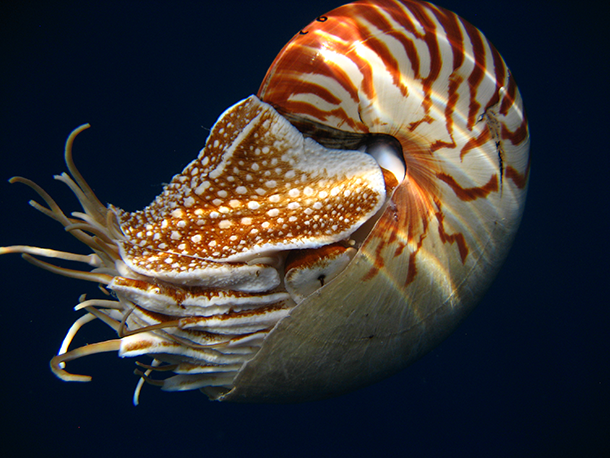
The chambered nautilus, found in the Indian and Pacific Oceans, could soon be listed as a threatened or endangered species. (Photo: Greg J. Barod)
CURWOOD: The horseshoe crab isn’t the only ancient creature that needs protection – consider the nautilus. The magnificent spiral shaped shellfish has survived five major mass extinctions, but its five hundred million years on earth is perilously close to coming to an end. Populations are declining so sharply that the Center for Biological Diversity has petitioned the US Fish and Wildlife Service [N.B. correction: the National Marine Fisheries Service, not US Fish and Wildlife Service] to protect them under the Endangered Species Act. The Center for Biological Diversity keeps a sharp eye on species in need of protection. And back in 2015 the Center’s Sarah Uhlemann told us about the dire situation of the Pangolin, a scaly ant-eater that’s the most trafficked creature on earth. Well, Sarah is back now to tell why the nautilus is in trouble. Welcome to Living on Earth, Sarah.
UHLEMAN: Thank you so much for having me.
CURWOOD: What exactly is a Nautilus? What does it look like?
UHLEMAN: Sure. So, this is one of my absolute favorite creatures. It's actually a cephalopod, so it means it is related to both octopus and squid, but unlike its relatives it lives its whole life in a shell. It's really the shell that makes it distinctive. The shell is about 10 inches wide, it's sort of an ivory color with these brown linear markings that make it really beautiful. What's particularly interesting about it is that it is a nearly mathematically perfect spiral. So, the picture that you have in your mind right now, that perfect spiral shell, that's the species that we're talking about.
CURWOOD: What does it live, what does it eat and how does it behave?
UHLEMAN: Chambered Nautilus, really only are found in one place, and that's in the Indo-Pacific Ocean. They have a very very narrow habitat range, so you're really not going to find them much above 100 meters deep - it's a little too warm for them up there. You're also not going to find them below 800 meters because the pressure gets too great. So, if you concentrate your fishing on one particular area and you end up overfishing the Nautilus of that area, Nautilus don't swim in the open water column, so if a reef is separated from another reef by 800 feet, you're not going to have any new Nautilus populations come in to repopulate the area so you can lose an entire potentially distinct population if you overfish an area.
CURWOOD: And how does it sustain itself? What does it eat?
UHLEMAN: It's a predator, it eats crustaceans and fish. It has about 90 tentacles and there's a sticky substance on those tentacles and it ensnares the fish and then consumes them.
CURWOOD: Whoa, that's a tough customer, huh? How many of these animals are there out there?
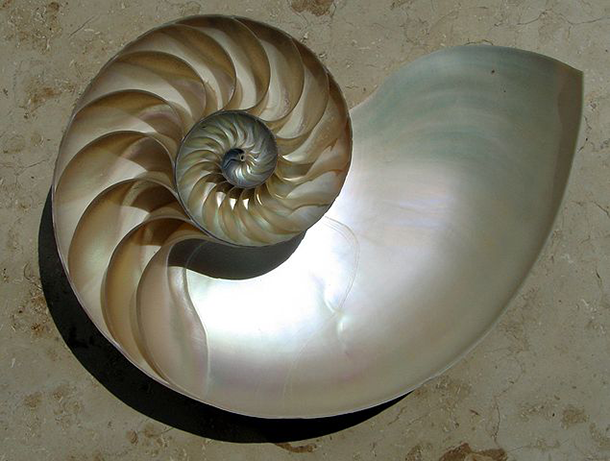
The mathematically perfect nautilus shell is a popular decoration, but high demand has led to population declines as steep as 80% in recent decades. (Photo: Chris 73, Wikimedia Commons CC BY-SA 3.0)
UHLEMAN: We don't know. What we do know though is that everywhere where there has been or is fishing for them, there are documented declines. The best evidence is out of the Philippines where over the past 30 years, fishermen have documented an 80 percent decline in Chambered Nautilius. That's a really really scary steep decline.
CURWOOD: So what's threatening them now? I understand these creatures have been around for half a billion years or so.
UHLEMAN: Yeah, scientists often refer to this creature as a living fossil because it really hasn't changed that much in the 500 million years they really haven't changed that much in the 500 million years they've been in existence. The biggest threat to the Nautilus is absolutely overfishing for its shell. People are really attracted to it, and they want it as home decor. So, we're essentially endangering a species for home decor which is just so sad. There's a lack of information about how many shells are in trade. We know that there have been 900,000 Nautilus products that have been imported into the United States in the past 10 years. I work a lot on wildlife trade issues and I have to always be very careful whenever I describe how beautiful and incredible a creature is. I have to emphasize that these creatures are most beautiful and most incredible in their natural habitat, not on some collector’s shelf.
CURWOOD: And know that I think about it, the Nautilus, when I see it on somebody's shelf, frequently people cut it in half.
UHLEMAN: Yeah, so if you cut it half, you'll see that the inside is covered with this silvery gray material that's actually used for jewelry sometimes - another way that this animal’s in demand. It's also divided into a lot of different chambers so they hatch with four chambers but as they grow they move into progressively larger and larger chambers and seal off the old ones. So, the inside has this sort of interesting chambered appearance.
CURWOOD: And what makes this species so vulnerable?
UHLEMAN: Their life history characteristics do make them particularly sensitive to over exploitation. They're very long-lived, they're very late to mature, they don't have very many eggs every year. So if a population is decimated it'll take a really long time for it to recover. It makes it very, very susceptible.
CURWOOD: You say they have long lives. Just how long?
UHLEMAN: They can live up to 20 years which is really long for a cephalopod.

A fossil impression in dolostone of a nautilus shell, found in western Ohio (Photo: James St. John, Flickr CC BY 2.0)
CURWOOD: The Center for Biological Diversity, your organization, you filed a petition I gather to protect this species under the Endangered Species Act. How's that work? What's the timeline here?
UHLEMAN: Yeah, so back in May, my organization, The Center for Biological Diversity, filed a petition to the National Marine Fisheries Service. So that's the US agency that controls and governs marine species. We asked that agency to list the Nautilus under the US Endangered Species Act. So that means if the agency agrees, this species will finally get some much-needed protections. The agency has a couple of options. It can protect the Chambered Nautilus as“endangered,”which would mean there can be no commercial trade, no import, no sale across state lines of the Chambered Nautilus shells. Huge protections, right?
Alternatively, the agency could protect the Chambered Nautilus as “threatened.”It could definitely put some constraints and we certainly hope the agency does on trade. There is a set of timelines that the agency is required to follow. One of those is that within one year the agency is supposed to decide whether our petition is warranted. We are fairly confident that they'll find that it is. Then, the agency issues a proposed role, which gives the public an opportunity to comment, and then at the end of another year the agency has to make a final decision.
CURWOOD; Now if these animals are found in the Indo-Pacific and sold all over the world, what kind of international protections are there for them?
UHLEMAN: One of the places that's within the range is American Samoa. So, technically these guys are ours right? They are a US species, which is kind of cool, but there is another potential layer of protections for them internationally. Much to the United States' credit, just a couple months ago they proposed that Chambered Nautilus and all of the Nautilus species be protected under a treaty called the Convention on International Trade in Endangered Species. The US has proposed that Nautilus be listed as what´s called Appendix Two, which means that trade can still occur, but whatever country is exporting - so the range country - has to determine that the trade won't detrimentally affect the species' survival. So there's an added layer of protection there. And they can also start tracking how many of the shells are actually in trade.
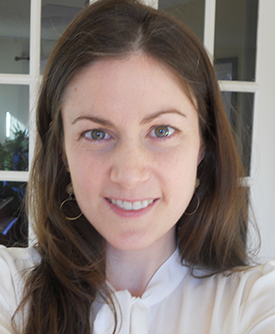
Sarah Uhlemann is International Program Director at the Center for Biological Diversity. (Photo: courtesy of Sarah Uhlemann)
CURWOOD: So this is a bit ironic that the US has petitioned the international body to restrict this but we don't do it at home. Why?
UHLEMAN: You know, that's a good question. I think it's in part because we're just learning a lot of new information about the Nautilus right now. A lot of the reports that I'm talking about are fairly recent and a timeline is right for the US to be proposing things internationally. There is a big meeting coming up in September where 182 parties get together and decide which species deserve these international protections. So the time is now, domestically and internationally.
CURWOOD: How many other mollusks are on the endangered species list?
UHLEMAN: We estimate 186. Most of them are freshwater mussels or Hawaiian tree snails, so there you go.
CURWOOD: So, Sarah, how do you feel about this creature? What fondness if any do you have for it?
UHLEMAN: Chambered Nautilus are really one of my favorite creatures on Earth, just because they are so unique. They're related to octopus but they live in this crazy shell that is just really beautiful. They've got these wild looking tentacles, this weird eye. They're just these really incredible creatures that deserve to survive.
CURWOOD: You guys often file these petitions. How's it going with the other stuff, for example, what about the Pangolin?
UHLEMAN: I love that you've asked about the Pangolin. We did petition to get all the Pangolins listed under the US Endangered Species Act. The agency did make a 90-day finding that was positive, saying that we had enough to at least move forward in the process. I've got a lot of comments from people all over the world. The mammal that is absolutely the most in trade of all the mammals in the world, about a million taken out of the wild in the past decade. Absolutely going to go extinct if we don't get serious protections for those species now.
CURWOOD: Leonardo DiCaprio has joined your campaign on the Pangolin, huh?
UHLEMAN: Yeah, it sounds like Leo is a fan. The man has good taste.
CURWOOD: Sarah Uhlemann is the International Program Director for the Center for Biological Diversity. Sarah, thanks so much for taking the time today.
UHLEMAN: Thank you so much, Steve.
Related links:
- Smithsonian National Zoological Park: “Chambered Nautilus”
- Center for Biological Diversity: “Saving the Chambered Nautilus”
- The CBD’s petition to the National Marine Fisheries Service
- NOAA Fisheries: “Listing Under the Endangered Species Act”
[MUSIC: Kendrick Lamar featuring Ab-Soul, “Ab-Soul’s Outro,” Section 80, Top Dawg Records]
CURWOOD: Coming up...why sharks are generally safer than toasters. That’s just ahead on Living on Earth. Stay tuned.
ANNOUNCER: Funding for Living on Earth comes from you our listeners, and United Technologies - combining passion for science with engineering to create solutions designed for sustainability in the aerospace, food refrigeration and building industries. UTC companies such as Otis, Carrier, Pratt & Whitney and UTC Aerospace Systems are helping to move the world forward.
This is PRI, Public Radio International.
[CUTAWAY MUSIC: Andanzas featuring Cynthia Price-Glynn, “Una Luz En El Mar (A Light On the Sea),” Songs Of South America, Alfredo Rolando Ortiz, Northeastern Records ]
Beyond the Headlines
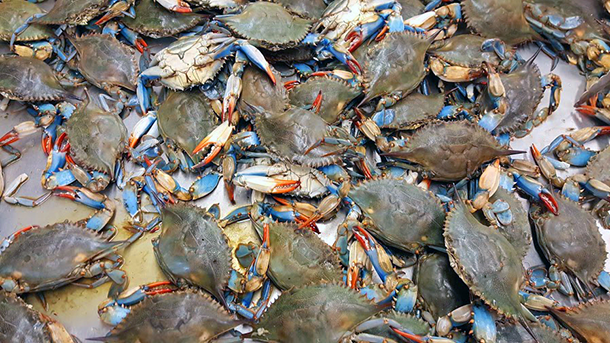
Thanks to climate change, blue crabs are being found farther north than ever before (Photo: Tim Evanson, Wikimedia Commons CC BY-SA 2.0)
CURWOOD: It's Living on Earth, I'm Steve Curwood. Time to check in with Peter Dykstra to see what’s up beyond the headlines. Peter’s with DailyClimate.org and Environmental Health News, that’s EHN.org, and on the line now. Hey, Peter, I guess it’s kind of steamy down there in Conyers, Georgia?
DYKSTRA: I think we're in the 90s for the next few months down here Steve. How are you doing?
CURWOOD: I'm doing well. Hey what have you got for us this week?
DYKSTRA: Well, the ups and downs of the seafood industry can bring good news and bad news to the same people at the same time. After a slow start due to some cold springtime weather, crabbers up and down the East Coast are dealing with a potentially huge catch this year. Researchers have estimated there are 20 percent more blue crabs in Delaware Bay this year over last, and a 35 percent increase in the Chesapeake Bay.
CURWOOD: So who could be crabby about that?
DYKSTRA: Well, the crabbers, it’s due to simple supply and demand. More crabs means more bushels of crabs caught, and that means oversupply, which means crab prices plummet. In the Chesapeake, smaller dead zones are getting the credit for the population increase. In other parts of the blue crabs’ range, it’s a different story. In Louisiana, the state, which has the largest blue crab catch, crab numbers are dropping.
CURWOOD: Oh, and the reason for that?
DYKSTRA: Some folks say it’s simply a matter of too many crabbers and crab pots. The state is considering regulating what has traditionally been a 365 day-a-year crabber free-for-all.
CURWOOD: So, what about climate change in all of this? It seems there’s always a potential link between changing sea life and warming waters.
DYKSTRA: And there apparently is here too. The biggest climate impact on crabs and crabbers is that blue crabs are being found farther north than ever before. Their traditional range was from the Gulf of Mexico up to Cape Cod, but in recent years they’ve been found off the New Hampshire seacoast and off Nova Scotia. And here’s one more impact: a study a few years back said that carbon in the water from ocean acidification may actually help blue crabs grow larger. But in many areas, blue crabs feed on oysters, whose shells are far more vulnerable to acidifying waters so they might not have as much to eat.
CURWOOD: So we'll see. Hey, what’s next?
DYKSTRA: Well, the U.S. Chamber of Commerce is the go-to organization for American businesses both big and small, right?
CURWOOD: Well, that’s what they tell us.
DYKSTRA: But if you’re the solar business, once small but getting big in a hurry, it seems the Chamber is the go-away-from organization. The Chamber has joined in to the efforts by big electric utilities to try and thwart net metering – where rooftop solar owners sell their excess power back to the local utility. That’s something that’s always struck me as the perfect combination of generating clean energy with the power of the free market.

The U.S. Chamber of Commerce is joining with utilities to put up barriers to net metering of rooftop solar (Photo: Cocreatr, Wikimedia Commons CC BY-SA 2.0)
CURWOOD: And if there’s anyone who usually favors a free marketplace, it’s the people at the Chamber of Commerce.
DYKSTRA: You'd think so, but last week, the Chamber sent an email out to its members and supporters, warning that they could fall under the thumb of Big Solar. It read, “While your neighbor is receiving a credit for putting excess energy back on the electricity grid … who is paying the costs (to maintain and update) the grid? You and everyone else!”
CURWOOD: It sounds like the U.S. Chamber of Commerce is fighting against one of the fastest growing, job-producing sectors in the country.
DYKSTRA: Well, it seems to be a part of their game plan. Don’t forget the U.S. Chamber has been lobbying against environmental regulation from the Kyoto Protocol to the Clean Power Plant.
CURWOOD: Hey, Peter, what do you have for our look back at history today?
DYKSTRA: Well, most people know Rachel Carson for her courageous, groundbreaking work on pesticides, but one of her most important books came years earlier. This week is the 65th Anniversary of the publication of “The Sea Around Us,” a truly great book on oceans.
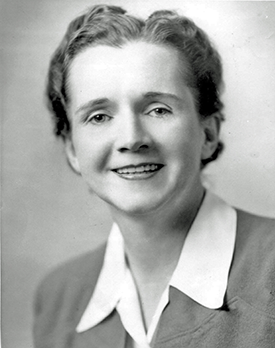
Rachel Carson’s book “The Sea Around Us” was published 65 years ago. (Photo: USFWS, public domain)
CURWOOD: Indeed, and her first three books were all about the oceans, right?
DYKSTRA: That’s correct. But“The Sea Around Us" stands out for me because it was probably the first science and environment book I ever read back in the late '60s. And more importantly, it was the first that I or most of its readers ever read about the relationship between the sea and global climate.
She devoted an entire chapter of "The Sea Around Us" and called it the global thermostat to the oceans’ impact on the earth’s temperature. She wrote this: “Without the ocean, our world would be visited by unthinkably harsh extremes of temperatures. It is an excellent absorber and radiator of heat.”
CURWOOD: And 65 years later, here we’re seeing rising ocean temperatures and it’s more clearly linked to climate change, right?
DYKSTRA: That’s correct. And Rachel Carson, who died more than half a century ago, is still a scientific prophet and, to some people, a political pincushion. Many of the folks who deny climate change also demonize Rachel Carson for inspiring the ban on DDT. Now I’m going to give you one more quote from The Sea Around Us, here it is: “It is a curious situation that the sea, from which life first arose should now be threatened by the activities of one form of that life. But the sea, though changed in a sinister way, will continue to exist; the threat is rather to life itself.”
CURWOOD: But bald eagles and hummingbirds are still around to thank her for her writing.
DYKSTRA: That's right.
CURWOOD: Peter Dykstra is with EnvironmentalHealthNews, that's ehn.org and DailyClimate.org – thanks Peter, we'll talk to you again soon.
DYKSTRA: Okay Steve, thanks a lot, talk to you soon.
CURWOOD: And there’s more on these stories at our website, LOE.org
Related links:
- Chesapeake Bay crab projections and prices
- Scientific American: “Blue Crabs Migrate North as Ocean Warms”
- Virginia crab numbers
- Louisiana crab population declines
- Grist: “U.S. Chamber of Commerce joins anti-solar crusade”
- “The Sea Around Us” by Rachel Carson
- Global Thermostat chapter by Rachel Carson
[MUSIC: Phil Collins, “Heat Wave,” The Essential Going Back, Holland-Dozier-Holland, Atlantic Records]
The Great White Shark Scientist

The boat that Greg Skomal and his team uses for tagging and videotaping great white sharks follows the dark shape of a shark through Cape Cod’s green waters (Photo: Keith Ellenbogen)
CURWOOD: For many humans, the Great White shark is the scariest fish in the sea, but for scientist Greg Skomal and writer Sy Montgomery those huge-jawed behemoths are simply fascinating. Sy followed Greg and his team as they searched the waters off of Cape Cod, Massachusetts for these creatures, and she tells the story in her latest book, "The Great White Shark Scientist". Sy Montgomery joins me now. Sy, welcome back to Living on Earth.
MONTGOMERY: Oh, I'm thrilled to be here again.
CURWOOD: Glad to have you. So, I've got to say it seems like finding a shark might be like finding a needle in a haystack. How does Greg Skomal do it?
MONTGOMERY: Well, it's not easy to go out and find a shark. You need to have a good enough day that both a boat and a spotter plane can go out. So he has eyes in the sky and they're looking above for the dark shape through the green murky water of a shark, and he stays in touch by radio with his pilot, Wen Davis, who tells him, “OK, this is where you going to find a shark.”Then, with an expert pilot, he goes out and they have to get right next to the shark.
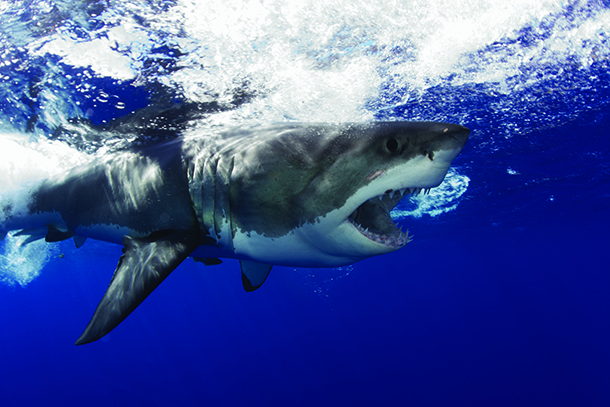
Despite sharks’ reputation as vicious creatures that will take a bite out of a human at every opportunity, perhaps our fear is a bit misplaced. Sharks of all species kill about eleven people each year, but humans kill 100 million sharks yearly. (Photo: Keith Ellenbogen)
CURWOOD: Describe for me, Sy, what exactly do they do when they find the sharks?
MONTGOMERY: When Greg finds a shark, he wants to get GoPro video of the animal from both sides, from above and below. He wants to find out how big is this animal, is it male or female - which you tell by checking underneath the tail - and you get a good shot of the distinguishing characteristics of the shark. You can tell who's who because of the distinct individual pattern where the dark part of the shark joins the light part of the shark and this is particularly easy to tell around the gills, the chin, and near the tail area.
CURWOOD: So getting this camera under the shark to get a good picture...?
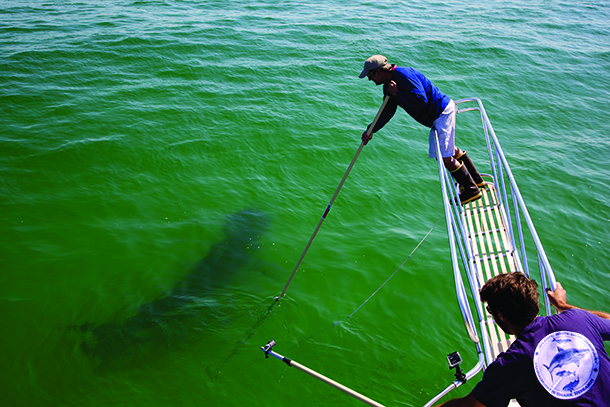
Greg leans over the “pulpit” of the research boat and sticks a GoPro camera into the water beside a great white shark. (Photo: Keith Ellenbogen)
MONTGOMERY: Right. They have it on the end of the pole, usually a pole used for a painter's brush, but it takes quite a bit of skill for Greg, who's out there on this pulpit that's built onto the front of the boat. So he's right above that shark and he's holding the pole down trying to get the right video. And you wouldn't believe it, but these really strong, huge fish are very shy. They spook easily, so it's not an easy job to find them, and once you find them getting that crucial video. They're also tagging these animals. The study that we were following, they were much more interested in doing the video than even doing the tagging because they want to know who each shark is.
CURWOOD: How exactly does this tagging process work, and what information does science get from it?
MONTGOMERY: The tags allow him to figure out who was where, when, and where do they go? Some of them are hooked up to satellites, transmitting every time the shark comes near the surface, its location, so you can plot out a map of where each shark has been. There's also a series of buoys around the Cape and when a shark swims near that buoy, he pings into that buoy so that you know what time, which shark visited that buoy. We got to meet, I think, seven different sharks on our last shark sortie, which was so thrilling. One of the ones that we met was Chex, and poor Chex had been a pincushion, he had actually been tagged a couple of different times, and we almost tagged him a third time until we realized, uh oh, it's Chex, and we don't need to tag him again.
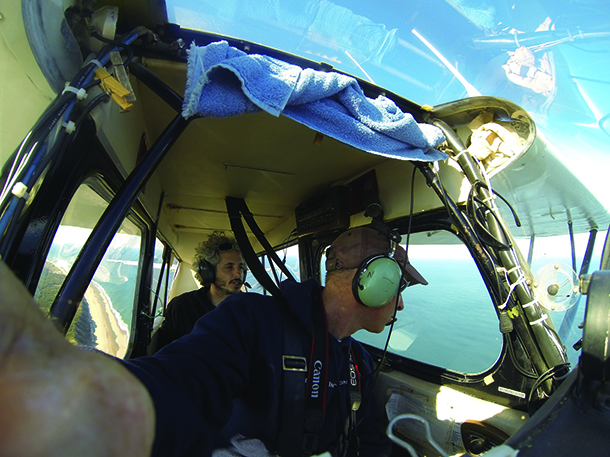
The pilot Wayne Davis and photographer Keith Ellenbogen took to the skies to search for sharks in Wayne’s Citabria. Wayne took this photo with Keith’s GoPro. (Photo: Keith Ellenbogen)
CURWOOD: Now I understand from your book, Sy, the public can look at the sharks that are tagged for the satellite.
MONTGOMERY: Well, with a smartphone, there's an app you can download and you can follow some the tagged sharks who have names like Mary Lee and Lydia, and they even have like their own Facebook page. They're like stars and people are so excited to know like Mary Lee showed up around New Jersey yesterday and oh gosh, Lydia's down in Florida, or one of them may be headed here. It's really cool to know that.
CURWOOD: Now, what's the website if you don't want to go the app way?
MONTGOMERY: It's ocearch.org. O-C-E-A-R-C-H.org.
CURWOOD: OK. Let me take a look here. Oh yeah, look at this. There is Lydia and she was last pinged yesterday oh and Helen! This is so cool. You can follow these guys in real time. Sy, truly, tell me. How frightening are these sharks for humans?
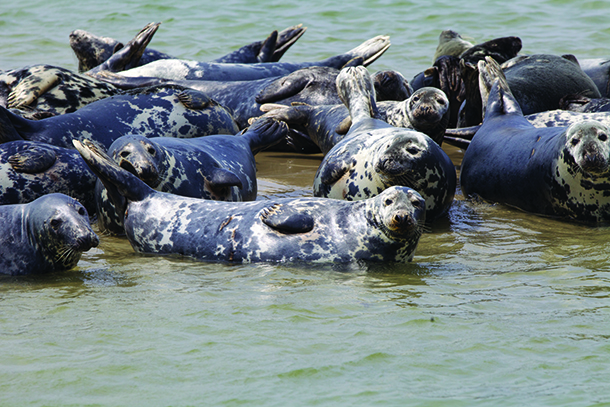
A recovering population of seals at Cape Cod appears to be drawing more sharks back to the area (Photo: Keith Ellenbogen)
MONTGOMERY: Well, I've got to say this. For this book, it's hard for Keith Ellenbogen and I also went to Mexico and we dived in a shark cage where these ways animals came within yards of us. What I felt when I saw my first Great White shark coming toward me, instead of panic was a profound sense of tranquility. When the animal looked at me, when I saw his eye swivel in its socket and look at my face, there was no malice at all. He wasn't the least bit interested in eating me, because think of it, a delicious seal with all that yummy blubber, that's like a steak and a piece of chocolate cake to a Great White shark, but me, I'm a stringy piece of celery that's been sitting out on the counter all week. They are not going to want to eat me. [CURWOOD LAUGHS] When I saw the shark coming, I felt very calm because here's this giant fish that reigned overseas for millennia, and only recently as humans have taken charge, and we've done a terrible job as you know. By 2050, the scientists tell us there's going to be more plastic in the seas than fish. But there I am, under the water, and here's someone who has done a great job for a millennia and I was just so glad to see someone showing up who knew what they were doing. And they're incredibly beautiful too. When you see them in the clear waters that you can off Guadalupe, they look like a knight in white and silver satin. I mean, they're just gorgeous, sleek, clean, perfect animals.
CURWOOD: As I understand it, in your book you say the Great White sharks particularly don't like to eat people.
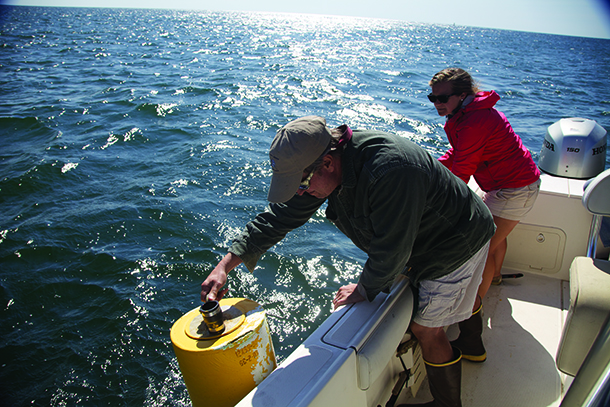
Greg pulls a receiver buoy that records which sharks came close, when, out of the water to download its data. (Photo: Keith Ellenbogen)
MONTGOMERY: Not really. I mean, when they occasionally do bite someone, they spit them out. They hardly ever eat them because it's a mistake. If you look at some of the figures, the chance of being killed by a shark of any species is 1 in 37 million. Whereas the chances that you will die of the flu is actually 1 in 63. You are far more likely to be injured by a room freshener, by a toaster or by your toilet.
CURWOOD: [LAUGHS] Whoa, wait. My toilet is going to bite me?
MONTGOMERY: Well, there's a couple things that could happen. You can get conked on the head by the seat if you're a little child, you could fall and you could drown. This is extremely rare and freakish, but more rare and freakish is a Great White shark will ever hurt you.
CURWOOD: Well, still, you don't want to tempt fate. How can people be shark smart when they are at the beach?

Greg tags a shark fin. The team has tied the shark to the boat by its tail to hold it in place during the tagging (Photo: Keith Ellenbogen)
MONTGOMERY: Well, one, don't swim way far out away from the beach, and don't go anywhere near the seals - it's illegal to do so anyway. And seals, have quite a set a teeth on them too. Since the Marine Mammal Protection Act of 1972, the grey seals have made a big comeback. Their numbers have swelled enormously. But they aren't on the beaches that people swim on. There was one attack on Cape Cod just a few years ago. That person was hurt, but he's absolutely fine, and it was the first attack on a person in Massachusetts in 76 years. That was in 2012, and the guy was swimming near some seals and far from shore. You know what I heard even before I met Greg? Even though I had never seen a shark at the beach, sharks see us all the time and swim right by.
CURWOOD: Sy, how many of the Great White sharks are there around the planet these days and how threatened are they as a species?
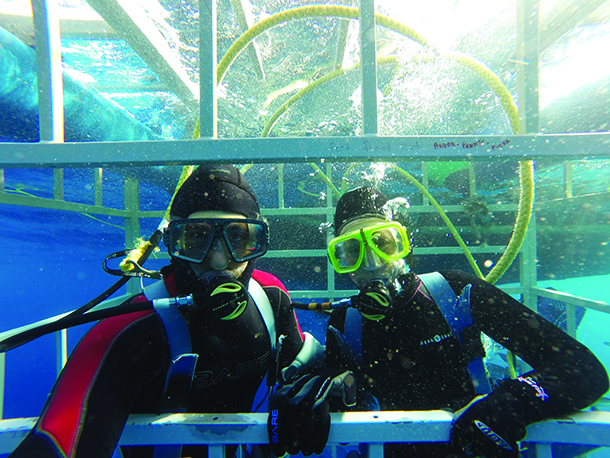
Sy, right, and photographer Keith Ellenbogen went scuba diving in a shark cage off the coast of Mexico. (Photo: Keith Ellenbogen)
MONTGOMERY: We don't know. It is believed that Great White sharks are not endangered. There's other species of sharks that are endangered. Often they're endangered because of the horrible practice of finning, to take the fins for shark fin soup this is a dreadful thing. The animal is fished out of the water, you chop of its dorsal fin and you dump the animal bleeding to die back in the ocean. Other sharks are targeted specifically because people fear and hate them and they're just killed because they a good shark is a dead shark. And this is a really dangerous view because when you start messing with the numbers of apex predators you wreck the whole balance of the ocean. In other areas where this has been done and shark numbers have collapsed, it has created but you call a trophic cascade of disaster all the way down to where the quality of the water actually suffers.

Shark scientist Greg Skomal and his family marvel at the size of a great white shark jaw (Photo: Keith Ellenbogen)
CURWOOD: Really.
MONTGOMERY: It messes up the whole ecosystem. One place where sharks were targeted specifically, and their number started to collapse. It killed the entire scallop industry for that area. Sharks keep the predators of the scallops numbers in order, and once you wreck that balance you can lose an entire fishery and because scallops are filter feeders, it wrecks the quality of water. That's what happens when we knock out one of those building blocks that's supporting the health of our seas.

Sy Montgomery is the author of over twenty books on wildlife for children and adults (Photo: courtesy of Sy Montgomery)
CURWOOD: What's the most surprising thing, Sy, that you learned about sharks in the course of writing this book?
MONTGOMERY: Just everything about them I think is pretty thrilling. I love knowing how many teeth these guys have, and how many they grow throughout their lives. A shark can produce 30,000 teeth in its lifetime, which explains why there's so many fossilized shark teeth floating around. Also, I was surprised to learn the age to which a Great White can live. Their life spans are similar to ours. They can live for 70 years.
CURWOOD: Sy Montgomery is the author of "The Great White Shark Scientist" and over 20 other books. And this one she did with photographer Keith Ellenbogen. Thanks so much, Sy, for taking the time.
MONTGOMERY: Thanks you, Steve, it was a pleasure.
Related links:
- Sy Montgomery’s book, The Great White Shark Scientist
- Track tagged Great White sharks and other marine animals on Ocearch
- Atlantic White Shark Conservancy
- Greg Skomal’s shark research for the Massachusetts Department of Marine Fisheries
- “Rethink the Shark”: Watch the humorous TV ads created to debunk shark risks
- About Sy Montgomery
Up Close with Penguins, Our Fellow Pedestrians
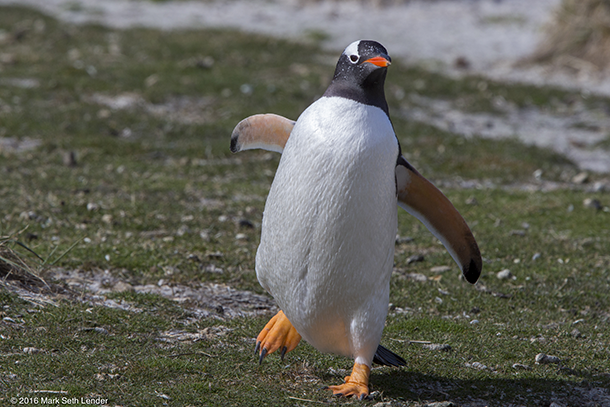
A Gentoo penguin waddles towards Mark (Photo: Mark Seth Lender)
CURWOOD: We stay by the sea – but head south to the islands of the South Atlantic and the Southern Ocean now. They’re a paradise for wildlife, because of their remoteness, and nearly non-existent human population. Our explorer in residence, Mark Seth Lender, visited both the Falklands and South Georgia, and discovered the locals as curious about him as he was about them.
Pedestrians
© 2016 Mark Seth Lender
All Rights Reserved
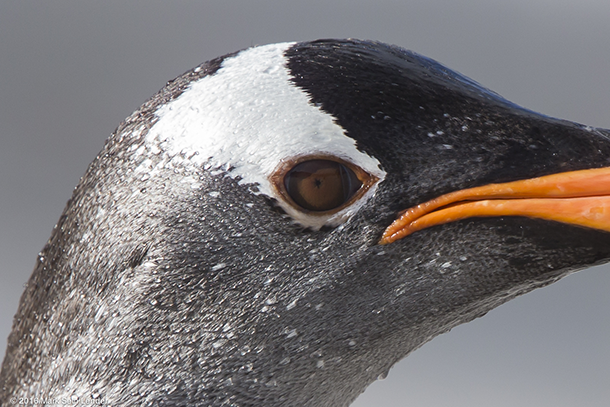
The gaze of a Gentoo penguin (Photo: Mark Seth Lender)
LENDER: We are pedestrians on a New York City avenue, unable to get out of each other’s way: Me, and a Gentoo Penguin come to Carcass Island to nest. I jog right - he mirrors me. He lurches left – I do the same. Head bobbling orange bill quavering penguin feet flopping like yellow clown slippers, me with my slicker flapping, eyes wide staring, arms akimbo -
Left Right.
Right Left.
- until -
Gentoo does an end run all the way around me, and escapes.
Later, down on the beach, it happens again. Another Gentoo comes so close, when I take his photograph there is only an eye in the frame: Iris pebbly as an orange skin, and the pupil shaped like a star. I bend down so he can have a better look. And just like the first, he bolts.

100,000 King penguins sing on South Georgia island (Photo: Mark Seth Lender)
We steam south and make landfall on South Georgia. A blue hanging glacier hunkers above, the mountains are white with snow, and on the curving strand 100,000 King Penguins, singing.
[SOUNDS OF SINGING KING PENGUINS]
They are the size you might expect a Martian to be except this is their planet and I am the visitor from outer space. One comes, closer than another human being would approach unless to kiss you (or do you harm), and stops right there.
And finally, finally I see the plan:
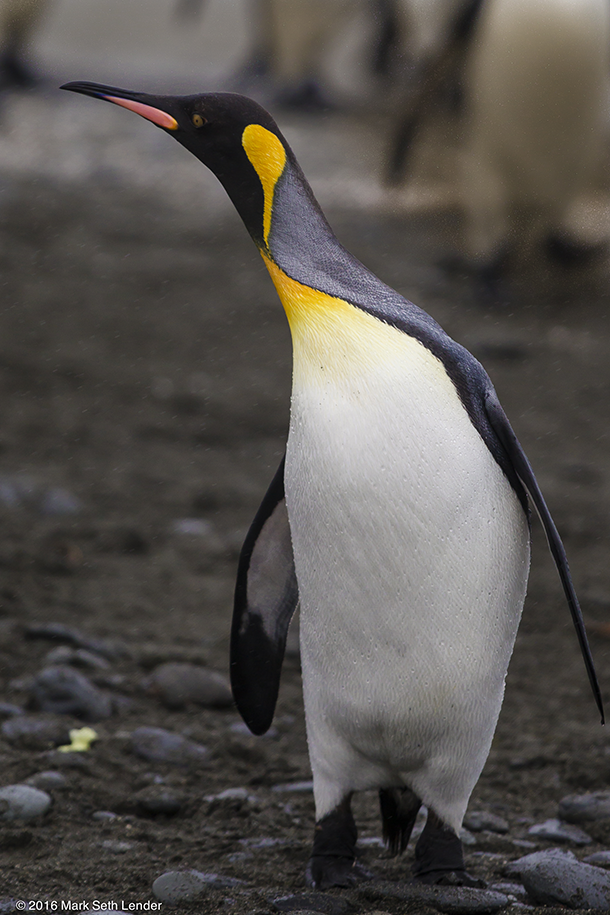
A curious King penguin comes close (Photo: Mark Seth Lender)
All he wants is that I stand, completely still (a live thing captured in a bell jar) to be studied. To be compared. To answer the Question you might ask if you were him:
You! What manner of bird? Of beak that has no mouth, as it should. Of mouth that has no beak; No sharp no terrible backwards-pointing teeth like Leopard Seal lurking... Of breath that steams. Of limbs that are not wings.
Of eyes that see.
And is that YOU behind those eyes? As behind my eyes, is ME?
[SOUNDS OF KING PENGUINS]
CURWOOD: Mark recorded these King Penguins on South Georgia, and his portraits of them and the Gentoos are at our website, LOE.org.
Related links:
- Visit Mark Seth Lender’s website
- More about Gentoo penguins
- More about King penguins
[MUSIC: Bela Fleck and the Flecktones, “Early Reflection/Bach/The Ballad Of Jed Clampett,” Live Art, Bela Fleck/Johann Sebastian Bach/Paul Henning, Warner Bros.]
CURWOOD: Living on Earth is produced by the World Media Foundation. Our crew includes Naomi Arenberg, Bobby Bascomb, Jenni Doering, Anica Green, Jay Feinstein, Emmett Fitzgerald, Jaime Kaiser, Don Lyman, Helen Palmer, Charlotte Rutty, Adelaide Chen, Jennifer Marquis and Jolanda Omari. Tom Tiger engineered our show, with help from Jeff Wade, Jake Rego and Noel Flatt. Special thanks this week to One Ocean Expeditions. Alison Lirish Dean composed our themes. You can find us anytime at LOE.org - and like us, please, on our Facebook page - it’s PRI’s Living on Earth. And we tweet from @LivingonEarth. I'm Steve Curwood. Thanks for listening.
ANNOUNCER1: Funding for Living on Earth comes from you, our listeners, and from the University of Massachusetts, Boston, in association with its School for the Environment, developing the next generation of environmental leaders. And from the Grantham Foundation for the protection of the environment, supporting strategic communications and collaboration in solving the world’s most pressing environmental problems. Support also comes from the Energy Foundation, serving the public interest by helping to build a strong, clean, energy economy, from Gilman Ordway, and from SolarCity, America’s solar power provider. SolarCity is dedicated to revolutionizing the way energy is delivered by giving customers a renewable alternative to fossil fuels. Information at 888-997-1703. That’s 888-997-1703.
ANNOUNCER2: PRI, Public Radio International.
Living on Earth wants to hear from you!
Living on Earth
62 Calef Highway, Suite 212
Lee, NH 03861
Telephone: 617-287-4121
E-mail: comments@loe.org
Newsletter [Click here]
Donate to Living on Earth!
Living on Earth is an independent media program and relies entirely on contributions from listeners and institutions supporting public service. Please donate now to preserve an independent environmental voice.
NewsletterLiving on Earth offers a weekly delivery of the show's rundown to your mailbox. Sign up for our newsletter today!
 Sailors For The Sea: Be the change you want to sea.
Sailors For The Sea: Be the change you want to sea.
 The Grantham Foundation for the Protection of the Environment: Committed to protecting and improving the health of the global environment.
The Grantham Foundation for the Protection of the Environment: Committed to protecting and improving the health of the global environment.
 Contribute to Living on Earth and receive, as our gift to you, an archival print of one of Mark Seth Lender's extraordinary wildlife photographs. Follow the link to see Mark's current collection of photographs.
Contribute to Living on Earth and receive, as our gift to you, an archival print of one of Mark Seth Lender's extraordinary wildlife photographs. Follow the link to see Mark's current collection of photographs.
 Buy a signed copy of Mark Seth Lender's book Smeagull the Seagull & support Living on Earth
Buy a signed copy of Mark Seth Lender's book Smeagull the Seagull & support Living on Earth

